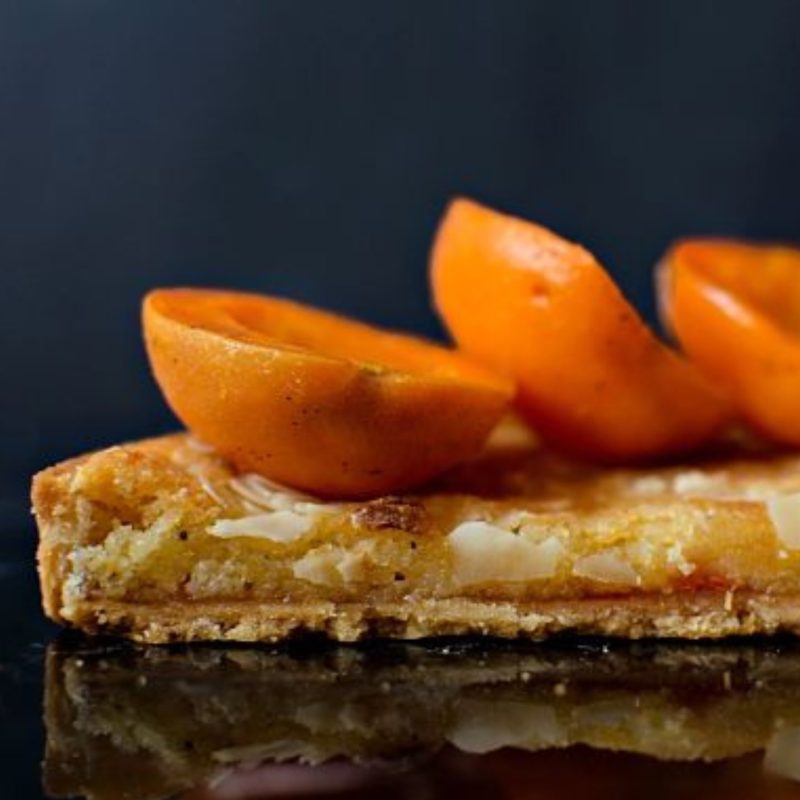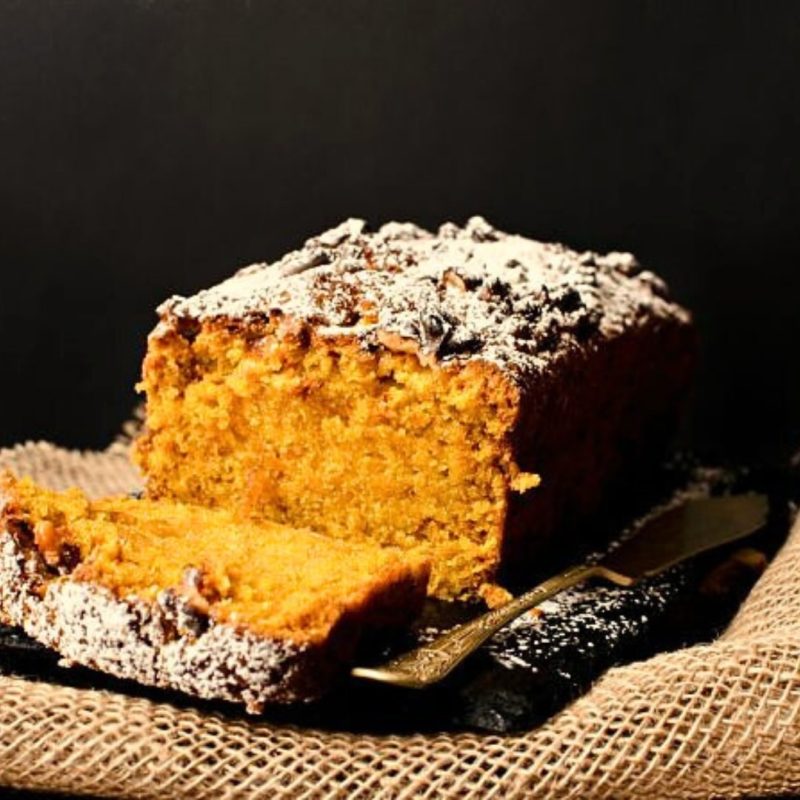Salt and Spices

This article is part of a new series on the blog – Baking Science – that focuses on the chemistry behind a recipe, on flavors, tools and techniques.
Salt
We all know what salt tastes like and how adding it to a recipe influences the taste, but salt is more than just a seasoning or flavor enhancer and it has a far more important role in some recipes than you might think. When I first started baking, I thought salt should be my last ingredient to worry about, especially in sweets. But oh boy, how wrong I was!
Salt plays a very important role in the chemistry of a recipe and writing it on the ingredient list is not just a fancy thing to do, but it has a purpose. First of all, salt slows down the chemical reactions happening in the dough, including fermentation – this is why the amount of salt added to a bread recipe is crucial. Bread recipes are usually well balanced and controlled – too much salt negatively affects the fermentation process and the dough won’t rise enough or not at all; if too little salt is added, the dough will rise too quickly, impacting the final taste, texture and crust of the bread. The recommended amount of salt to add to a bread dough is somewhere between 1 and 2% of the amount of flour used, depending on the type of bread and recipe.
Salt also makes the dough stronger by tightening the gluten structure, but it also impacts the shelf life of baked goodies because it absorbs water easily. Therefore, if the weather is humid, it will absorb water from the air and turn baked goodies that were supposed to be crisp into soggy, not so appealing food. But if the weather is dry, the salt holds water in the dough of batter, keeping it fresh for a longer time. Salt also helps the browning process in the oven and manages to reduce the oily taste of certain baked goodies. Tip: add a pinch of salt to your egg wash for a better browning.
But most of all, salt adds flavor to baked goods and it enhances the taste of certain ingredients, such as flour, butter, chocolate or lemon. It adds a certain edge that makes us crave for one more slice of cake or one more cookie, it’s the one ingredient that manages to bring everything together into a tasty, impressive dessert, balancing the sweetness. Needless to say that it’s the same with savory foods and recipes.
As for what types of salt to use, there’s plenty to choose from: kosher salt, sea salt, Himalayan salt and the very fancy fleur de sel. The thumb rule in baking however is to use a fine salt, no matter its type. If it’s course, it might not melt properly, leading to salty, crunchy bits in your batter or mousse.

Spices
Spices are plant or vegetable based compounds or substances used to flavor foods. This includes seeds, flower buds, roots or bark, some of them used in their natural form, some of them grind into a fine powder to be used in batters, creams or mousses. Whole spices have a longer shelf life, while ground spices lose their flavor quickly and can’t be stored for a long time. They are usually stored in airtight containers, in a cold, dark place.
A small amount of spice goes a long way so it’s important to keep the balance and use just the right amount. More vanilla in your cake batter may not impact the taste negatively, but too much ginger or lavender surely will so remember to keep the balance and use a little at a time.
If I were to consider my favorite spices, I’d probably go with vanilla and a mix of cinnamon, ginger, cardamom and nutmeg. But let’s look closely to the most used spices in the pastry kitchen, their characteristics and what they pair well with.
Vanilla
Found in pretty much every pastry recipe, vanilla has become the universal spice for a dessert. Vanilla, real vanilla – extract, not essence – comes from a tropical orchid in the form of a bean or pod and its the seeds that have the most intense aroma. As you might expect, good quality vanilla is pretty expensive, but it’s well worth the price! I prefer using vanilla extract in my baked goodies because it stores better than vanilla pods and it’s easier to use. Plus, I make my own vanilla extract at home so I get to control its strength and flavor well.
Vanilla can also be found in the form of a paste, which is more concentrated – usually 1/2 teaspoon vanilla paste equals 1 teaspoon of extract, but also in the form of a powder which is just as intense.
Vanilla pairs well with almonds, apples, berries, chocolate, cloves, coconut, honey, nutmeg, orange, peach, pumpkin and the list can go on. It’s probably the most delicate spice and its aroma enhances the other ingredients instead of overpowering them.

Ginger
Ginger is a plant whose rhizome is widely used as spice in baking and cooking. It seems that the plant is originated in south China, but it spread to India and from there to Europe through spice trades. It’s one of the most intense spices I ever used in baking and a little goes a long way, especially since it aroma is not on everyone’s taste.
Ginger can be found either fresh, powdered or candied, but each and every form has a different taste and intensity and can be substituted for one another, but with care and thought on the final taste. Fresh ginger is milder than powdered, ground ginger, but I also find it to have a much intenser heat to it, while ground ginger focuses on the flavor itself, leaving aside the heat. Candied ginger is something I have yet to try in a recipe, I find it to be too intense for my taste buds.
What I love about ginger is that it can be stored for a long time in a sealed bag in the fridge or it can even be frozen. It keeps up to a few weeks and it can also be used in tea or other drinks, not just breads, gingerbread or cakes.
Ginger pairs well with all-spice powder, almonds, star anise, cardamom, banana, nuts, caramel, chocolate, cinnamon, citrus, coconut, cumin, dates, hazelnuts, various fruits, pepper, pumpkin, raisins and vanilla, but it is also used in savory cooking, mostly in Asian or Indian recipes.

Cardamom
Found as a pod or as a powder, cardamom belongs to the same plant family as ginger. It comes from India, which is the larger producer and exporter or cardamom in the world. The pods are shelled in a paper thin outer layer, hiding inside a few small, black seeds. Interesting enough, cardamom is said to be the second most expensive spice, after saffron. But that’s real cardamom we’re talking about because the market nowadays is flooded with inferior types of cardamom which are cheaper, but don’t have the same flavor as the original Elettaria cardamom.
Its flavor is warm, with touches of eucalyptus and lemon and sometimes camphor. The pods can be used either whole or split for more flavor, but as a thumb rule, always remove the pods from the liquid or food you’ve been using them into because they tend to go bitter. Ground cardamom has an intense taste and heat, much like ginger and only a bit is enough to add plenty of flavor.
Cardamom pairs well with: apples, bananas, caramel, citrus, coconut, tropical fruits, almonds, chili, cinnamon, star anise, turmeric, chili, pepper, cumin, ginger and whole cloves.
Cinnamon
Cinnamon is the inner bark of a tropical tree, originated in Sri Lanka, formerly Ceylon. It has been used as a spice for centuries, being more prized than gold at some time in human’s history. Along with ginger, cinnamon reached Europe through the spice trades and it quickly gained terrain in recipes. At first it was used to flavor meat casseroles, cooked in one single pot with veggies, fruits and plenty of spices. Then the crusaders brought home sugar and soon the mince pie was born. No wonder that the Portuguese invaded Sri Lanka as soon as they had the chance, forcing the king to pay tributes made entirely of cinnamon. A century later, Sri Lanka was captured by the Dutch who established a cultivation system that still exists.
You will find two products on the market being sold as cinnamon: one is Ceylon cinnamon which is the real cinnamon and has a lighter color, but also a sweeter, more delicate flavor, and cassia, which is very similar to cinnamon, but the bark is thicker and the flavor is pungent, edgy. To distinguish the two you have to look at the way the bark is rolled: cinnamon usually rolls into one single quill and it’s thin and lighter, while cassia is usually rolled from both sides so it resembles scrolls, it’s thick and it has a dark color, it’s also cheaper and it is originated in China, not Sri Lanka.
Both cinnamon and cassia can be used in both baking and savory cooking. However, being far more delicate, cinnamon is preferred for desserts, such as cakes, puddings, chocolate dishes or fruits desserts.
Cinnamon pairs well with: apples, pears, citrus fruits, ginger, cardamom, nutmeg, star anise, whole cloves, chocolate, pumpkin, caramel, coffee, chili, cumin, vanilla or turmeric.

Allspice
Allspice powder is a fairly new addition to my kitchen, but it’s growing on me. It takes its name from its aroma which smells like a mix of spices, mainly cinnamon, whole cloves, ginger and nutmeg with a touch of black pepper. The All-spice tree is originated in South and Central America where it used to grow wild. Nowadays, the trees are harvested.
The spice was brought to Europe soon after America was discovered, although it didn’t become as widely used as cinnamon or ginger, despite its intense flavor and resemblance with the previous named spices. The allspice berries resemble large peppercorns and can be found both whole and ground. They have an aromatic, intense flavor with nutmeg, cinnamon, ginger and cloves as main flavors and pepper as the final touch.
Allspice pairs well with apples, pears, caramel, pumpkin, beets and chocolate.
Cloves
Originated in the Spice Islands of Indonesia, cloves seems to be one of the oldest spice in the world, records showing that Asians used it centuries ago to flavor food and as a cure for various health problems.
Cloves are the unopened flower buds of a tropical tree. Fresh, they are pink, but they turn brown once dried. Their flavor is warm, intense, edgy and they can easily overpower a dish, both in their whole or ground version.
Cloves pair well with: all-spice, apples, pears, beets, cardamom, cocoa, chocolate, citrus fruits, cumin, ginger, pineapple or other tropical fruits, star anise, turmeric, vanilla, mace or fennel.
Lavender
Native to the Mediterranean are, lavender is now a widely known spice used in desserts, although its uses don’t stop here. Soaps, shower gels, shampoos and other cosmetics take advantage of its amazing scent.
Lavender has a clean, flowery scent and taste and it pairs well with lemon, berries, vanilla or chocolate.
Mint
Here’s how the story goes: Minthe was a nymph who attracted the attention of Hades. But Hades’s wife, out of jealousy, attacked mint with the purpose to kill her. Hades showed up just in time and turned Minthe into a herb which was sacred to him. True or not, mint has been playing an important role in our lives for centuries, from the very common tea to various desserts and the praised chocolate-mint combination.
Mint pairs well with: chocolate, grapefruit, peaches, apricots, lavender, lemon, orange, lime and juniper.

Nutmeg
Originated in the Spice Islands, nutmeg comes from an evergreen tree who produces the spices only after fifteen to twenty years after planting. The same tree produces mace as well. Nutmeg is the seed inside the fruit and mace is the lacy covering of the kernel. Despite its name though, nutmeg is not a nut and it’s not a danger to those allergic to nuts.
Both nutmeg and mace have been used and appreciated since Roman times, but it is the Portuguese who held monopoly over the production of nutmeg, them being the ones to own the Spice Island. Th Dutch managed to draw them out of the Islands eventually, but they had the same strategy – keeping the source of nutmeg a secret and the price of the spice high. Pierre Poivre managed to smuggle a few seeds to Mauritius where they flourished, thus ending the Dutch monopoly. The British then introduced the spice to India, Sri Lanka, Indonesia and Grenada, all of them producing nutmeg at the moment.
Nutmeg is sold either whole or ground, but whole nutmegs are preferred because the flavor tends to deteriorate quickly. Whole nuts on the other side can be stored for indefinite time and just grated when needed.
The trick with nutmeg is that in larger quantities can be poisonous, therefore moderation is required when adding it to desserts. It’s sweet, aromatic, warm flavor is perfect for a large variety of desserts, from gingerbread to chocolate mousse or panna cotta.
Nutmeg pairs well with: all-spice, cardamom, carrots, cinnamon, cloves, coffee, ginger, cumin, peaches, pumpkin, orange and vanilla and it is used in desserts like gingerbread, biscuits or milk puddings, but also in dishes like risotto, fish soup or chicken patties.
Star anise
Native to China and Vietnam, star anise was introduced to Europe in the seventeenth century. The spice is the fruit of a small tree and, as the name suggests, it has a star shape with a few sections that encase the pods.
The taste of star anise is powerful, pungent, a bit similar to liquorice. The spice is used either whole or ground into a fine powder.
Star anise pairs well with: cinnamon, cloves, cardamom, citrus fruits, apples, pears or peaches.

Alcohols
Various alcoholic drinks can be used to flavor up desserts. The list includes liqueurs, wines and other alcohols, such as brandy or rum. The most common fruit-flavored alcohols used in pastry are: Cointreau, Grand Marnier, Triple Sec, cassis and blackcurrant liqueur. The list goes on with Amaretto, creme de cacao, creme de menthe, Kahlua, rum (light and dark), cognac, brandy, kirsch, Marsala and Madeira wine, but also homemade versions of the ones mentioned above.







This is extremely helpful! I had no idea about the importance of salt in baking, thanks so much for shedding the light on that!
Great post Oana! I love spices! x
Thank you, Louise.